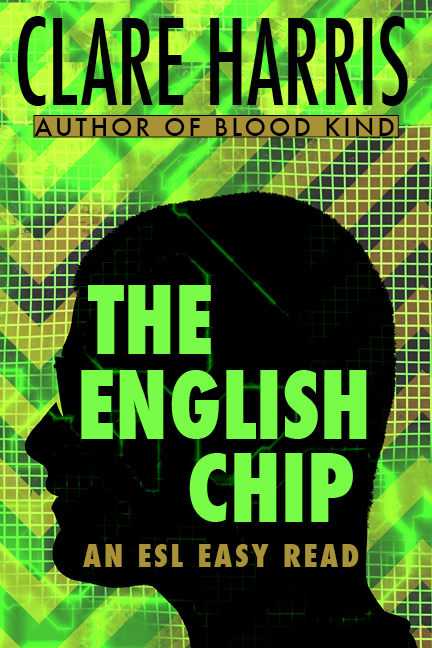 In this post, a chat about Real Grammar (out last year) with author Carl Eldridge:
In this post, a chat about Real Grammar (out last year) with author Carl Eldridge:
Carl, I know you were wanting to create something different from the usual grammar books. What has the reaction been to Real Grammar?
The reaction has been great. Students tell me they finally understand how grammar works and can now make their own sentences with confidence.
Which I gather they hadn’t understood before?
The students in the test group were from a range of Asian countries (Japan, China, Korea and Taiwan). In their schooling in their home countries, the focus of grammar classes was on rote memorisation of what is correct and what is incorrect. Real Grammar offers them a different perspective, looking at grammar as a way of understanding how English speakers put words together to communicate our ideas. After all, the students’ goal when learning a language is to communicate their thoughts clearly.
What a great response – you must be pleased! What were the experiences that prompted you to even think about this book, and then to actually start writing?
I was teaching English in Japan and had many students asking me why we used different grammatical features in different situations. I looked for answers in books and online but often couldn’t find them. Materials often say things like ‘there is no rule, you just need to remember’ and often avoid the question of ‘why’ entirely, presenting lists and tables for students to memorise, along with lists of exceptions, all presented somewhat randomly.
The general attitude seemed to be that that is the way it is, get used to it. Don’t ask questions, don’t attempt to understand it, just do what the book says.
At the same time I was studying Japanese and had many ‘why’ questions myself so I understood what these students were going through. Students often know what they want to say but have trouble putting the words together, so like many teachers I want to help them develop this ability.
I started to use my own diagrams in classes that clearly illustrate the concept behind a grammar point, what it means and how it is used. Students responded well, so I decided to take the idea further and write a book that uses meaningful diagrams to make the content easy to grasp.
And how long did the book take you to write?
It took two years of full-time conceptualisation, writing and research.
Wow. But now I’ve seen the book, I understand that. What level learners would get the most out of it?
I wrote it with intermediate students in mind. Intermediate students are familiar with a range of sentences and often want to take the next step and learn to use the language in a more natural way. However I have also used it with students of other levels.
Advanced students can also benefit from this approach. By understanding why, they can understand nuance. They compare a grammatical feature with other grammatical features and see that the meaning being communicated may be similar in some situations but different in others because of the different core meanings.
So as well as supporting students, what does Real Grammar offer teachers?
Real Grammar can also be used as a teachers’ resource, for any level. Traditional grammar has many short-term grammar rules that hold true in early stages of learning, when learners only focus on certain basic sentences. However, these rules fail to hold true once learners encounter real-life English. As the students’ level increases, traditional resources add more detail to the rules to patch up the holes. One of the most challenging things when writing Real Grammar was ensuring that the explanations have no exceptions. Learners deserve simple and accurate explanations.
Teachers can use Real Grammar to find ways to present key English concepts simply (with diagrams and simple words) to beginner level students. This gives the students a solid foundation that they can extend upon. And as their English ability progresses, they see how everything logically fits in with what they already know.
I know you were back in Australia for a while, but it seems this is really an international book.
It is written in international English, as many students want to use English for international communication. The book outlines the basic concepts that are shared by all native English speakers.
In your experience, what grammar points are learners most surprised or relieved about when they finally ‘get it’?
The main thing is that the learner stops seeing grammar as a collection of random grammar points and starts connecting the dots. The points are important, but the relationship between the points is more important. So, rather than as a collection of disconnected rules, the learner views English grammar as a system that they can take joy in exploring. This new perspective is incredibly liberating.
What a great position for a learner to be in! And a last question: any ‘key tips’ for teachers and tutors on how they can help learners with grammar?
The whole reason for learning an additional language is to be able to communicate with a wider range of people. We choose words to express our thoughts and communicate. The reason for teaching grammar is to help students gain a clearer conceptual understanding of how the language achieves this. We can bring their attention to key examples that illustrate how the grammatical concept is used and encourage them to make discoveries.
It’s great to give them opportunities to explore, make comparisons and dig deeper and see how the pieces fit together for themselves. This helps them develop a solid foundation of usable knowledge. They can then go on to make their own choices that enable them to communicate their thoughts clearly.
Thanks so much for those thoughtful responses, Carl.
Real Grammar is available online on www.realgrammar.com. The eBook is available on Amazon.








